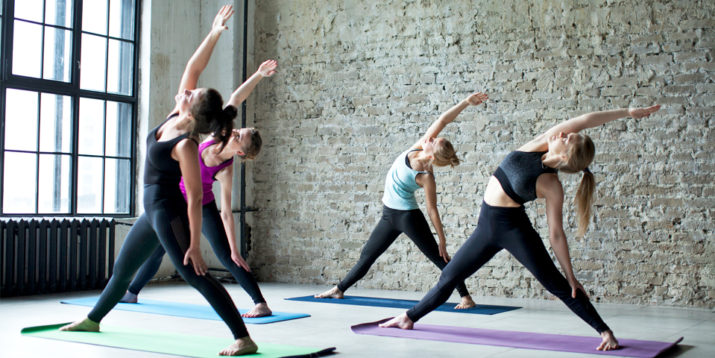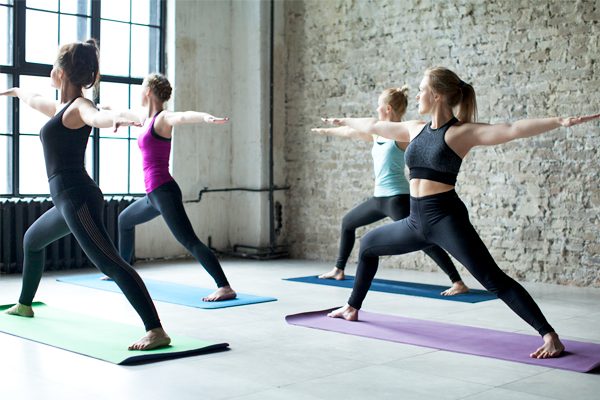What Is Shakti Yoga, and Is It Right for Me?

With nearly 37 million yoga practitioners in the US, there are more options than ever for finding a yoga practice you like.
There’s hot yoga and HIIT yoga for those who like to sweat. There’s restorative yoga and yin yoga when you want to go slow. For rule followers, there are regimented practices like ashtanga yoga or Iyengar yoga. For homebodies, there are even at-home yoga videos like 3 Week Yoga Retreat. And for the free spirits, there’s shakti yoga.
What Is Shakti Yoga?

Shakti yoga blends dance or free movement with traditional yoga poses. It wasn’t created by a single individual so it doesn’t have a clear lineage or strict rules, but instead, it’s inspired by the creativity and self-expression concepts of shakti.
In yoga, the word shakti means “power” and “divine feminine,” usually in reference to energy.
“It can mean different things to each of us, but at its essence, shakti is vibrant power, energy, and vitality,” says Beachbody Yoga Expert Elise Joan. “Shakti empowers us to be luminous, radiant, creative, and in-flow with the universe.”
Joan, who leads Beachbody yoga practices for all levels, likens shakti yoga to a free-form style of vinyasa yoga. She explains that both kinds of yoga use some of the same postures and deep breathing to create smooth, fluid transitions.
“Shakti yoga is a dynamic style which seeks to promote confidence and improve vitality through dance-like movements that flow powerfully and energetically,” she says. “Many classes will incorporate a period of free-flow to promote self-expression.”
And although the connection to the “divine feminine” might make it sound like shakti yoga is just for women, anyone can enjoy this practice.
“Shakti is the creative, transformational energy force that we all have in all of us,” says Lauren Farina, E-RYT 200, RYT 500. “Through the practice of yoga, you’re discovering your transformational energy.”
Different Kinds of Shakti Yoga
Yoga classes might be called “shakti yoga” because they’re a special offering for women, they’re held on a full or new moon (shakti and feminine energy are associated with the moon), or they incorporate ecstatic dance.
You may find classes called shiva-shakti yoga, which will be an interpretation of hatha yoga aimed at balancing masculine and feminine energies.
There are also shakti power yoga classes, which will be like a faster-paced vinyasa yoga practice that can be heated or not.
Farina named her studio Shakti Power Yoga Nashville because she sees it as a place to create transformation — you harness your personal shakti each time you unroll your mat, whether it’s at home or with a group.
And although she doesn’t call her classes “shakti power yoga” specifically, Farina’s teaching integrates the concept, encouraging students to ignite their personal power from within, not by grasping for external achievements.
“We have all of that shakti energy inside of us,” she says.
Benefits of Shakti Yoga

The benefits of shakti yoga, like other forms of yoga, extend to your physical, emotional, and spiritual well-being.
If you’re someone who struggles to let loose and open up, shakti yoga may be beneficial to you.
“I believe it helps unlock the most vibrant part of each of us, allowing us to move confidently from a true place of authentic self-expression,” Joan says. “In my experience, it helps release stress, tension, and fatigue. A well-led shakti-themed flow can help us feel vibrantly alive!”
You might have encountered some shakti yoga elements in other yoga classes already — maybe your teacher encouraged you to turn cat and cow poses into some feel-good hip circles or you’ve been instructed to personalize a pose.
If you follow Joan’s Beachbody Yoga Studio workouts, you’ll notice some elements of shakti yoga in her classes.
Poses and Sequences of Shakti Yoga
Joan says you can expect familiar poses like warriors, chaturanga, and chest (“heart”) and hip openers in a shakti yoga class, and also a lot of sun salutations.
But it’s not just the poses that matter: “Transitions are key in shakti yoga, which focus on the space between postures as much as the postures themselves,” she says.
You can’t do a wrong pose in shakti yoga, Farina adds — it’s a time to get creative and find something that inspires you.
Opt for poses that get you to your edge, where you start to consider quitting or backing out.
When you stay in a pose and breathe, “you find your inner strength,” Farina says. Since everyone is unique, we’ll all have different poses that take us to our edge.
The Takeaway
While the concept of shakti is deeply woven into classical yoga, shakti yoga isn’t a specific school or type of yoga. There’s no rule book or list of do’s and don’ts.
If you’re interested in finding more freedom on your mat (or more spontaneity in life), this type of yoga is perfect for you.
